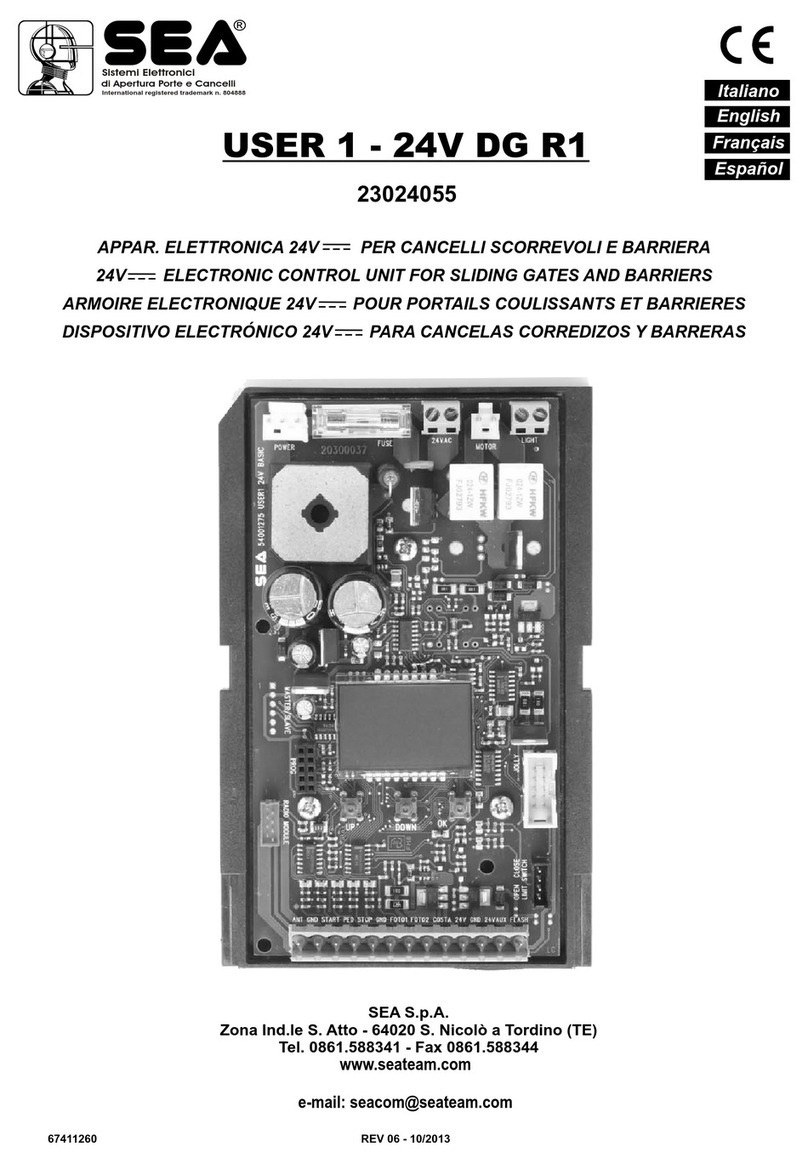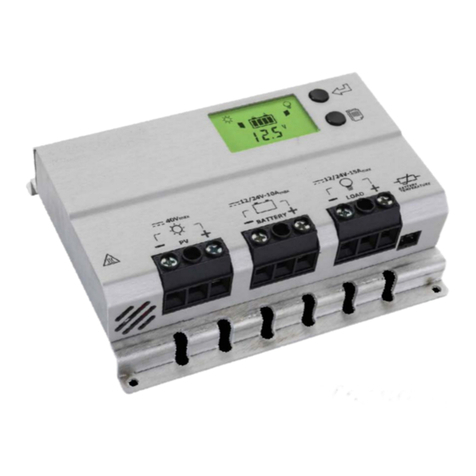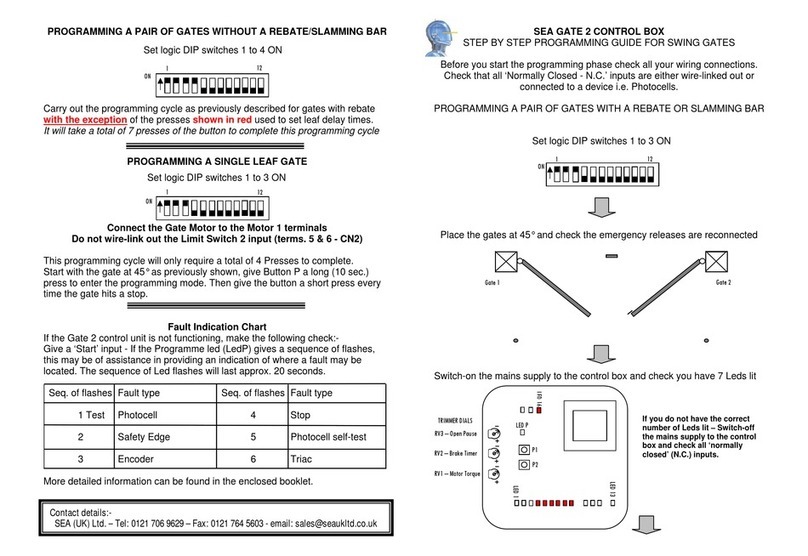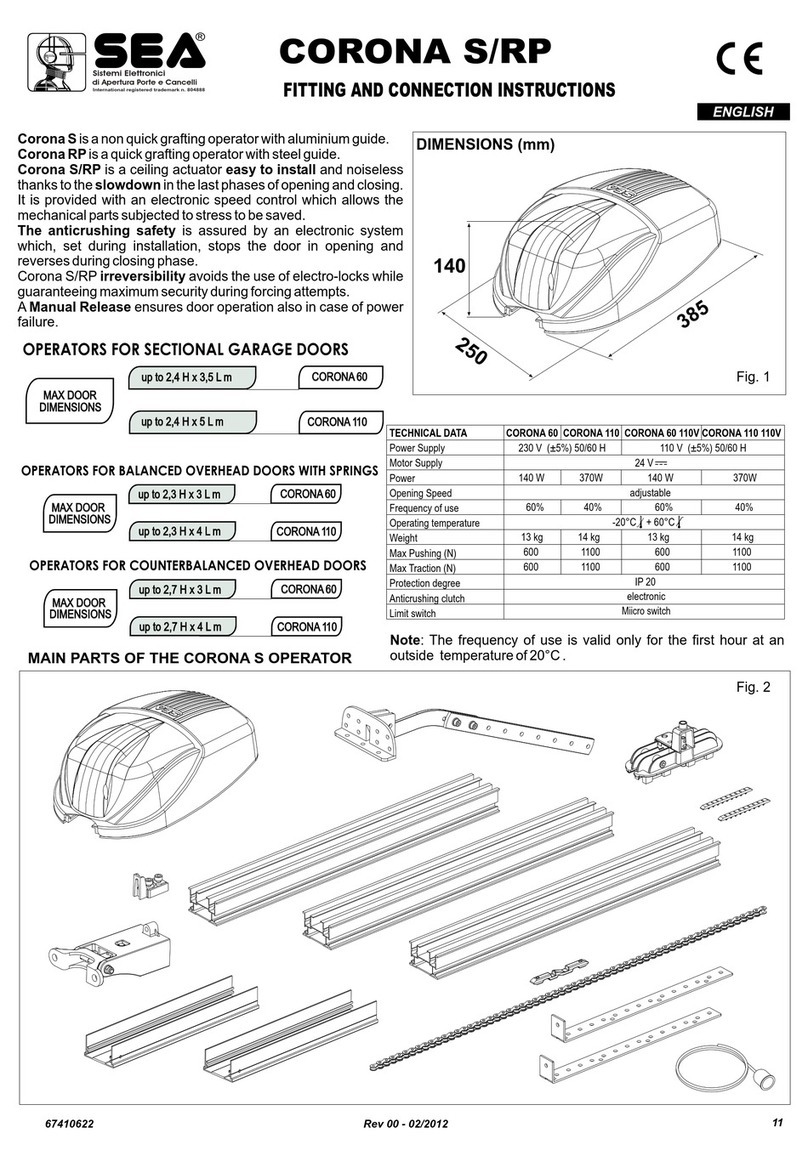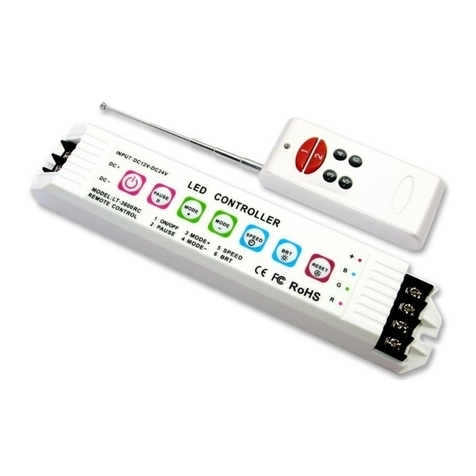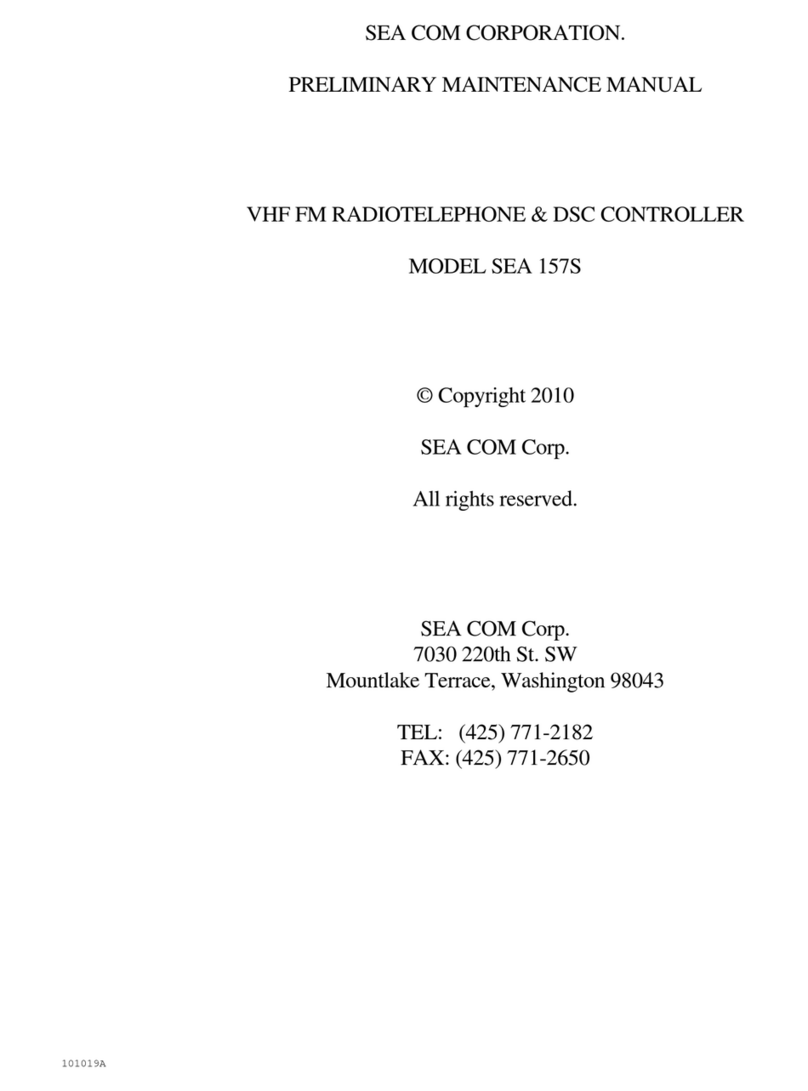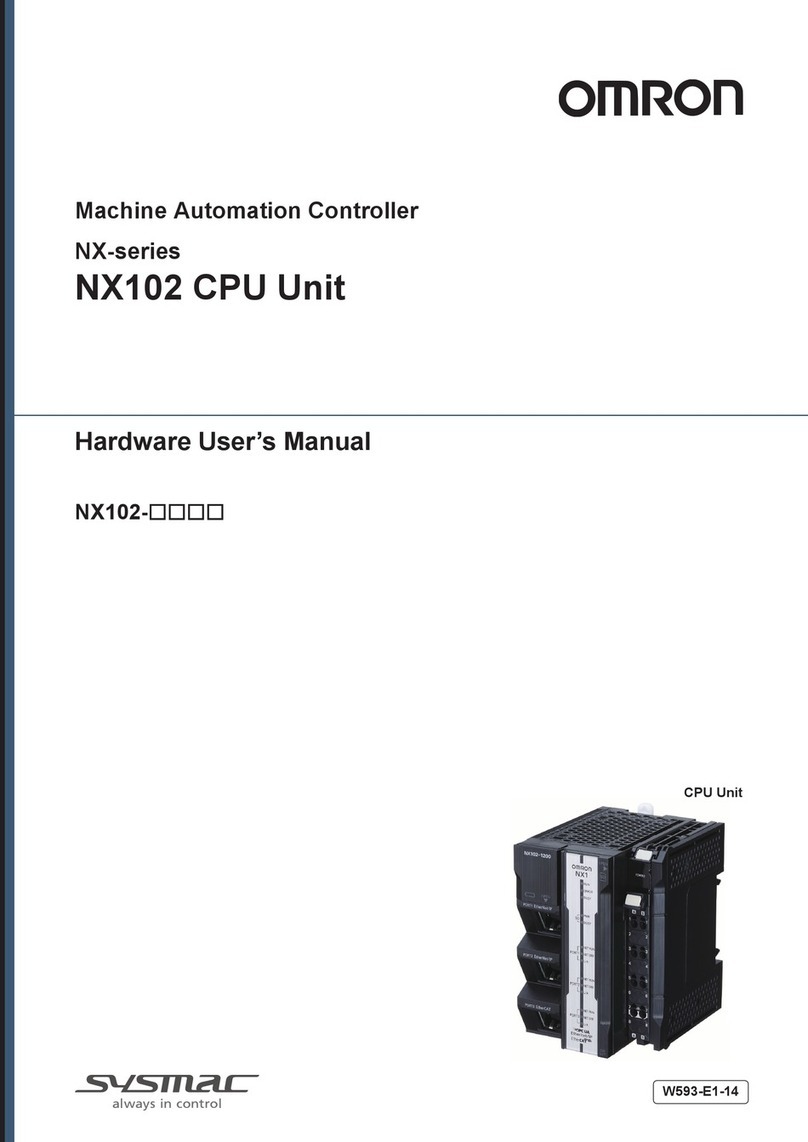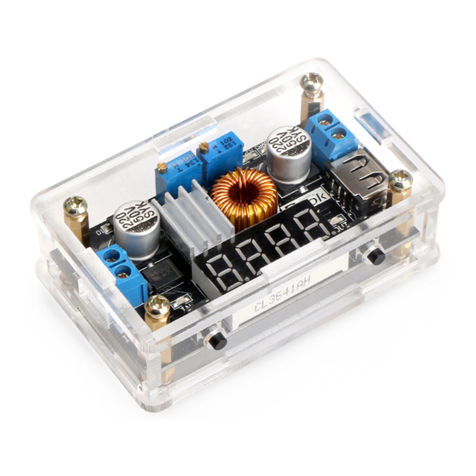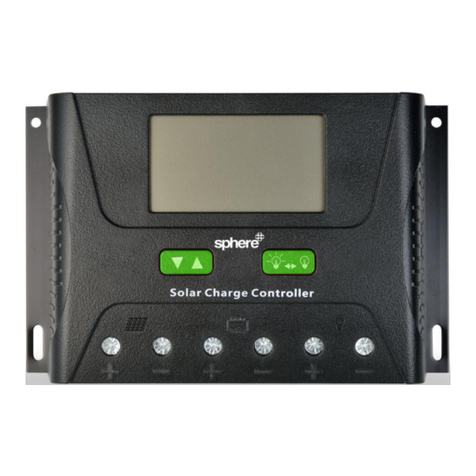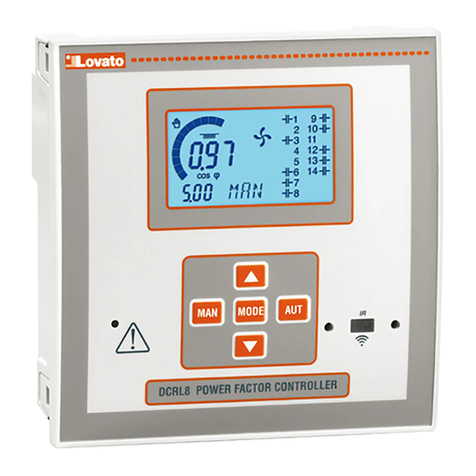SEA 245 User manual

i
SEA INC OF DELAWARE
PRELIMINARY MAINTENANCE MANUAL
EXCERPTS ON THEORY OF OPERATION
MF/HF SSB GMDSS RADIOTELEPHONE/DSC
CONTROLLER
MODEL SEA 245
(c) Copyright 2001
SEA, Inc.
All rights reserved.
SEA, Inc.
7030 220th St. S.W.
Mountlake Terrace, Washington 98043
(425) 771-2182
FAX: (425) 771-2650

ii
TABLE OF CONTENTS
5 THEORY OF OPERATION................................................................................................................................5-1
5.1 GENERAL ...........................................................................................................................................................5-1
5.2 THE RECEIVER .................................................................................................................................................5-1
5.3 THE TRANSMITTER ........................................................................................................................................5-7
5.4 THE MASTER CLOCK OSCILLATOR AND SYNTHESIZER SYSTEM ................................................. 5-11
5.5 THE 2187.5 KHZ MONITOR RECEIVER...................................................................................................... 5-14
5.6 THE POWER SUPPLY CIRCUIT .................................................................................................................. 5-17
5.7 THE MAINBOARD CONTROLLER AND DSP PROCESSORS ................................................................ 5-20
6 THE SEA 245 FRONT PANEL/CONTROLLER SYSTEM ........................................................................... 6-1
6.1 GENERAL ...........................................................................................................................................................6-1
6.2 THEORY OF OPERATION...............................................................................................................................6-1
LIST OF FIGURES
5.2.1 RECEIVER BLOCK DIAGRAM ....................................................................................................................... 5-2
5.3.1 TRANSMITTER BLOCK DIAGRAM .............................................................................................................. 5-6
5.4.1 SYNTHESIZER BLOCK DIAGRAM.............................................................................................................. 5-12
5.5.1 2187.5 KHZ MONITOR BLOCK DIAGRAM................................................................................................ 5-14
5.6.1 POWER DISTRIBUTION BLOCK DIAGRAM ............................................................................................ 5-17
5.7.1 MAINBOARD CPU AND DSP BLOCK DIAGRAM .................................................................................... 5-20
5

5-1
5 THEORY OF OPERATION
5.1 GENERAL
The SEA 245 is a double conversion MF/HF SSB transceiver of up conversion
design. The first intermediate frequency (IF) is 45 MHz and uses a relatively
narrowband (8 kHz) crystal topping filter in conjunction with front end low and high
pass filters to provide excellent image, spurious and harmonic rejection. This type
of broadband design results in a minimum of tuned circuits. The second
intermediate frequency of approximately 40 kHz permits the use of DSP
oversampling techniques to provide secondary selectivity.
Receiver baseband recovery uses IF based DSP circuitry. The filtered,
downconverted 40 kHz IF signal is fed into the ADC and DSP circuitry provides
programmable receiver filtering and demodulation.
Transmitter baseband generation is likewise DSP based and uses the DSP/CODEC
circuitry and an I/Q modulator, together with an appropriate DSP algorithm to
generate the desired baseband signal at 45 MHz.
The frequency control circuitry in the SEA 245 uses a combination of two PLL-
based frequency synthesizers and the system DSP engine to provide the various
frequency conversions.
The first conversion oscillator is the 90-150 MHz VCO, which uses a PLL-based
loop with a reference of 8 kHz. This oscillator is then divided by two to 45-75
MHz. The resulting coarse-tuned local oscillator has a resolution of 4 kHz, very fast
settling time and a low noise floor.
The second conversion VCO operates at 45.040 MHz. In the transmit mode, the
VCO operates at 45.016 MHz for the transmitter I/Q modulator circuitry. The loop
reference frequency is 8 kHz.
All frequency determining circuitry is locked to the master clock oscillator, a 12.288
MHz OCXO.
The SEA 245 operating system resides in the Front Panel/Controller Assembly. The
operator communicates with the operating system firmware through the 18 key
keypad. The Front Panel/Controller Assembly is actually a SEAbuss(c) Controller
designed to communicate with the Mainboard Controller through the standard
SEABUSS interface. The SEA 245 SEABUSS is designed to support a single SEA
2450 Remote Controller in addition to the Front Panel.
5.2 THE RECEIVER

5-2
Receiver Block Diagram
SEA 245
Figure 5.2.1
HI-PASS
ANT
TX/RX
PA/FILTER BOARD
LOW PASS
BAND SELECT
ASY-0245-02
LOW PASS
Q2
RF GAIN
CTL
45-75 MHz
1st LO
U1
2nd LO
45.040 MHz
MIX-1
MIX-2
U3
U2FL-1 FL-2
I.F.
U5
45 MHz
40 KHz
U34
A/D
U1
CODEC
U7
DSP
U31 B/C
ASY-0245-01
MAINBOARD
ASY-0245-03
FRONT PANEL/CONTROLLER BOARD
SQL
CPU BOARD
ASY-0245-04
VOLUME
Q6
U14
SPKR
U10

5-3
5.2.1 BLOCK DIAGRAM
Figure 5.2.1 shows the block diagram of the receive mode. The received RF signal
is routed from the rear panel antenna jack to a low pass filter selected by a relay
bank on the PA/Filter Assembly (ASY-0245-02). The output of the filter is routed
from J4 on the PA/Filter Assembly through a coaxial cable to the receiver input
circuitry on the Mainboard Assembly (ASY-0245-01). The signal is further
bandpass filtered to reject interfering signals and input to the RF
preamplifier/attenuator, Q2. In the "on" state, the amplifier provides some 3-4 dB of
low-noise preamplifier gain. In the "off" state, the stage becomes an attenuator that
provides approximately 10 dB of signal attenuation. The use of this switched gain
stage improves the weak signal sensitivity of the receiver and provides a front-end
attenuator that is used to insure that large signals do not swamp the ADC in the DSP
engine. The preamplifier/attenuator stage output is routed to the first mixer and the
signal is upconverted to the first IF at 45 MHz.
The 45 MHz IF signal passes through a low noise MMIC gain stage to a 4-pole
crystal "topping" filter with approximately 8 kHz bandwidth, a second MMIC
amplifier stage and a second two-pole crystal filter into the second mixer. In the
second mixer the signal is combined with the second Local Oscillator frequency of
45040 kHz. The mixer output signal is buffered by low-noise amplifier U3,
converted to a push-pull signal by U5 and then applied to the input of the A/D
converter U34. U34 digitizes the signal and passes it to the DSP engine, which
provides all baseband filtering, fine-tuning, demodulation and AGC functions. The
audio signal is converted to balanced format for transmission over the SEABUSS
audio lines to the Front Panel/Controller board (ASY-0245-03). The Controller
provides squelch processing, volume control and a speaker amplifier.
5.2.2 RECEIVE RF CIRCUITRY AND FIRST MIXER
As previously discussed, an incoming signal is first passed through some shared
circuitry on the PA/Filter Board (ASY-0245-02). This consists of a bandswitched
array of low pass filters, a T/R relay and a PIN diode signal limiter which prevents
damage to receiver input circuitry in the presence of extremely large signals. The
received signal is then sent through a coaxial cable to the receiver input on the
Mainboard Assembly (ASY-0245-01). On the Mainboard, a high-pass filter
consisting of C1, L1 and C7 further filters the signal.
Diode CR1 is forward biased in the receive mode from the +12VRX rail and
reversed biased in the transmit mode from the +12VTX rail through CR2. This T/R
switching circuitry provides extra isolation between the low-level transmitter signal
and any signal leakage through the PA/Filter Board T/R switches. From CR1, the
received signal passes through a low-pass filter (C5, L2 and C6) to the
preamplifier/attenuator stage. This stage is a low noise, low gain (+4 dB) broadband
common-gate JFET amplifier. A gain step is provided by switching the
preamplifier supply voltage on and off through Q6. When Q6 is OFF, the stage

5-4
becomes an attenuator with a loss of approximately 10 dB. The output of the
preamplifier is then applied to double-balanced mixer MIX1. The use of a hot
carrier diode mixer assures minimal cross modulation and intermodulation
distortion in the receiver front end.
5.2.3 THE 45 MHz IF
The output from mixer MIX1 contains the desired signal upconverted to 45 MHz.
This signal is amplified by a low noise, high dynamic range MMIC amplifier that
establishes a good low noise 50-ohm termination for the mixer. Output of the first
IF amplifier is filtered by FIL1, a four-pole monolithic crystal filter of approximately
8 kHz bandwidth. This is the "topping" filter, which serves to remove the unwanted
secondary image, RF, and LO leakage as well as other unwanted upconverted HF
signals that fall outside the filter bandwidth. Following the topping filter is a second
MMIC amplifier stage and a second 2-pole filter. The total gain between the
receiver input and the 45 MHz output is approximately 12 dB. The maximum
allowable input signal with preamplifier on is approximately -3 dBm. Switching in
the attenuator raises this level to approximately +10 dBm.
5.2.4 THE SECOND MIXER/POST AMPLIFIER
The second mixer converts the 45 MHz IF signal down to the second IF frequency
of approximately 40 kHz. This mixer is a +13 dBm type, necessary to handle the
somewhat higher signal levels present at this point. Following the mixer, the signal
is passed through a low noise operational amplifier with a stage gain of 10 to a
phase splitter circuit with stage gain of unity. The phase splitter output drives the
differentially configured A/D input.
5.2.5 THE A/D CONVERTER
In IF/DSP receivers, system performance is highly dependent upon the
characteristics of the A/D converter that moves the signal from the analog to the
digital realm. In the SEA 245, A/D Converter U34 is a 24-bit, 96 kHz stereo ADC
with a dynamic range of 110 dB and greater than 100 dB signal-to-noise ratio. The
inputs to the ADC are full differential and the chip includes a reference filter and a
digital decimation filter, which minimizes requirements for anti-aliasing filtering.
The 40 kHz second IF signal from the main receiver and the 14.583 kHz second IF
signal from the 2187.5 kHz monitor receiver are each connected to one of the stereo
inputs of the ADC. The resulting digitized signals are then passed on to the system
DSP that is located on the CPU Board (ASY-0245-04).
5.2.6 THE CODEC
The CODEC is part of the CPU Board Assembly (ASY-0245-04) and uses AC'97
REV 1.03 architecture in a 18-bit sigma/delta configuration. The CODEC contains
both an A/D and a D/A converter. The A/D converter is used to convert transmitter
baseband signals into a digital bit stream suitable for processing in the DSP.

5-5
The D/A converter works in both receive and transmit modes. While receiving,
digitally processed receiver signals from the DSP engine are converted back into the
analog realm for processing through the amplifier/loudspeaker system. When
transmitting, digitally processed (and generated) baseband signals from the DSP
engine become the analog input signals to I/Q modulator chip U6 on the Mainboard
Assembly.
5.2.7 THE DIGITAL SIGNAL PROCESSOR
The main DSP engine in the SEA 245 consists of U7 on the CPU Board Assembly.
This is a TMS320VC5402, a specialized type of microprocessor which includes
such features as a 40-bit ALU, data bus with Bus-Holder feature, extended
addressing mode for 1Mx16-bit maximum external program space and many other
specialized features intended to facilitate the specialized math functions necessary
for DSP.
In the SEA 245, the DSP circuitry and firmware perform most of the signal
processing functions necessary to convert a radio signal into an audio signal and
vice-versa. These functions include frequency conversion, filtering, demodulation
and gain control in the receive mode and baseband signal processing, filtering and
generation in the transmit mode.
Since the DSP engine is actually a highly specialized type of microprocessor many,
indeed most, of the characteristics of the receiver and transmitter functions are
controlled by firmware algorithms embedded in the CPU Board memory. It is thus
possible to use the same system digital hardware to generate (and demodulate) voice
signals, TELEX signals, Digital Selective Calling signals or essentially any signal
format up to the bandwidth limitations of the system analog hardware. Receiver
AGC characteristics, transmitter bandwidth shaping and ALC functions are all
determined in firmware.
5.2.8 THE RECEIVER AGC SYSTEM
There is only one variable gain element in the receiver AGC system, JFET
preamplifier Q2. The amplifier passes signals whether or not it is enabled but, when
disabled, there is approximately 10 dB of attenuation with respect to the enabled
state. The actual AGC parameters are determined by the DSP algorithm and are
tailored to suit the mode selected. When receiving SSB signals, the AGC has the
usual fast attack-slow release characteristics suitable for SSB. The DSP software
monitors signal level and disables the preamplifier when necessary to protect the
A/D input from overload.
5.2.9 THE RECEIVER AUDIO CIRCUITY
The received signal is processed through the DSP engine and converted to an audio
baseband signal in the system CODEC. This signal then exits the CPU Board as the
SPKR.AF signal on pin 19 of J3 on the Mainboard and then passes through audio
gate U30C to the audio SEABUSS driver stage consisting of U31B and U31C.

5-6
Transmitter Block Diagram
Figure 5.3.1
SEA 245
I
MIC
U10/DC
CONTROLLER
ASY-0245-03
U31A
DSP
U1
CODEC
U7
45-75 MHz
1st LO
Q
MAINBOARD
ASY-0245-01
PA/FILTER
Q1
Q2
Q3
45.016 MHz
90°
2nd LO
Q6
Q7
LOW
PASS
Q3
45MHz
FL1
Q5 Q4
MIX-1
TX/RX
PA/FILTER
ASY-0245-02
BAND SELECT
ANT

5-7
The audio signal then leaves the Mainboard Assembly (ASY-0245-01) as a 600
ohm balanced 0 dBm level and is received by the SEABUSS audio receiver in the
Front Panel/Controller Assembly consisting of balanced line amplifier U10A.
After passing through U10A, the signal is then sent to the VOLUME control and the
squelch limiter U8A and U8B. The signal from the VOLUME control wiper then
goes to AF Power Amplifier U14 where it is amplified to a 4-Watt level and is then
sent to the loudspeaker.
The limited audio signal from U8A is sent to an input of the Controller
microprocessor (U1) where it is used to generate the SQL signal. An algorithm in
U1 senses the presence (or absence) of a voice signal in the limited audio signal and,
when the Squelch function is activated, generates a SQL OUT signal. The SQL
OUT signal is used to turn on the squelch gate transistor Q6 to silence the
loudspeaker.
5.3 THE TRANSMITTER
5.3.1 BLOCK DIAGRAM
Figure 5.3.1 shows the block diagram of the SEA 245 in the transmit mode.
Microphone audio is amplified and converted to a balanced format for transmission
from the Front Panel/Controller Assembly to the Mainboard Assembly (ASY-0245-
01) via the SEAbuss audio lines. On the -01 board it is converted back to
unbalanced format and then digitally sampled by CODEC U1 on the CPU board
(ASY-0245-04). The CODEC transfers the data serially to the DSP, U7. The DSP
generates a SSB signal at the (nominal) subcarrier frequency of 16 kHz. The
CODEC converts the digital sample stream back to analog format. The resulting I
and Q SSB signals are fed back to the Mainboard and into the inputs of quadrature
modulator U6. The modulator mixes the I and Q signals with in-phase and
quadrature 45.016 MHz local oscillator signals. This results in a single sideband
signal at the 45 MHz intermediate frequency. This IF signal is passed through the
bilateral 45 MHz crystal filter into the IF port of mixer MIX1. This mixer
downconverts the IF signal into the MF/HF RF band. The RF signal is low-pass
filtered and amplified before being passed on to the PA/Filter Assembly (ASY-
0245-02) via a coaxial cable. Transmitter preamplifier Q1 boosts the signal level
sufficiently to drive the push-pull driver stage consisting of Q2 and Q3. The driver
output is then routed to the push-pull power amplifiers, Q6 and Q7. The output of
the amplifier is then routed through the T/R relay to a low pass filter that is relay
selected for the desired band of operation. The filtered output is fed to the antenna
jack on the SEA 245 rear panel.
5.3.2 THE MICROPHONE AUDIO CIRCUITRY
The 600 ohm dynamic microphone output is terminated by 620 ohm resistor R8 and
then passes through R94 and C13X to the input of the amplifier/phase splitter stage

5-8
consisting of operational amplifiers U10C and U10D. MOSFET Q5 is connected
between the junction of R94 and C13X and ground and serves to mute the
microphone circuitry in the receive mode. The balanced audio output from U10C
and U10D passes through analog gates U13A and U13D to the SEAbuss audio line.
The SEABUSS audio interconnection between the Front Panel/Controller
Assembly (ASY-0245-03) and the Mainboard Assembly (ASY-0245-01) is through
the 8-pin ribbon cable between P2 on the Controller board and J4 on the Mainboard.
These 8-pin DIP interconnections constitute an internal SEABUSS interface
between the two assemblies.
5.3.3 THE AUDIO LINE RECEIVER/TRANSMITTERS
SEABUSS audio is bidirectional and passes through audio line receiver/transmitters
at both ends of the path.
The receiver/transmitter circuitry consists of a balanced input line receiver and a
balanced output line driver or transmitter. The line driver is connected to the
SEAbuss(c) line through analog gates. These gates disconnect the line driver from
the SEABUSS when the receiver/transmitter is in the receive mode. In the receive
mode, balanced audio is presented to the input of an operational amplifier connected
as a differential amplifier. Balanced operation permits a high degree of common
mode rejection, insuring good noise rejection. The output of the line receiver is
unbalanced audio which is then passed on to the internal radiotelephone circuitry.
When the receiver/transmitter circuitry is in the transmit mode, the analog gates are
turned on, connecting the balanced output of the two amplifier line driver to the
SEABUSS.
SEABUSS audio level is nominally 2 volts peak-to-peak balanced (0 dBm).
5.3.4 THE CODEC AND DIGITAL SIGNAL PROCESSOR
CODEC, U1, digitizes audio from the microphone circuitry at a rate of 96
kilosamples each second. The samples are transferred to the DSP U7 for
processing. The DSP performs audio processing to maintain a relatively uniform
audio level and to reduce the peak-to-average ratio of the audio. This facilitates
more efficient use of the RF power amplifier. The audio is also bandpass filtered to
remove unwanted components, particularly above 2900 Hz. The audio is then
converted to a single sideband signal at the (nominal 16 kHz) subcarrier frequency.
This SSB signal is then passed through the CODEC and converted to I and Q analog
signals.
5.3.5 THE QUADRATURE MODULATOR
The I and Q signals from the CODEC are sent to quadrature modulator U6 on the
Mainboard. This modulator consists of a PLL based LO phase shifter, two mixers
and a combiner. A 45.016 MHz local oscillator (LO) signal from the synthesizer is
AC coupled into the modulator. The internal PLL circuit regenerates the 45.016

5-9
MHz LO and produces two 45.016 MHz LO signals with a 90 degree phase
differential. These are used as the two local oscillators for the mixers. One is
mixed with the I component and the other is mixed with the Q component. The two
mixer outputs are summed to complete the single sideband mixer. In the summer
the desired sideband adds constructively while the undesired sideband cancels out,
producing a single sideband signal with a center frequency of 45 MHz. A DC bias
network with three trimpots (R77, R78, and R85) allows adjustment of opposite
(image) sideband and carrier suppression.
5.3.6 45 MHz IF AND SIGNAL MIXER
The 45 MHz signal from the quadrature modulator passes through switching
diode/attenuator CR6 to topping filter FIL1A/FIL1B. When in the transmit mode,
CR6 is biased on by the +12VTX rail through resistors R48 and R66. Bias current
is approximately 10 mA, resulting in a low loss switch. Monolithic filter
FIL1A/FIL1B is matched to the low impedances of the quadrature modulator and
mixer by the two "L" networks, L10/C39 and L9/C38. The filter output is passed
through CR5 to a attenuator consisting of R34, R35 and R36 and then through CR4
to the IF port of MIX1
5.3.7 THE LOW PASS FILTER AND TRANSMITTER PREAMPLIER
The downconverted transmitter signal from MIX1 is passed through a seven section
elliptical function low pass filter which provides some 50 dB of rejection for the
image and IF frequencies above 30 MHz. The filtered MF/HF signal is then passed
through diode switch CR3 to the input of the transmitter preamplifier. L6, A 27 μH
choke, serves as a simple high pass filter to restrict signal into the preamplifier to the
MF/HF spectrum. The transmitter preamplifier is a two-stage wide band amplifier.
The first stage consists of transistors Q3 and Q4 in a negative feedback voltage
amplifier. The output of this stage is taken from the low impedance emitter of Q4
and further amplified by Q5. Q5 is a transformer coupled power amplifier which is
used to boost the power output level of the SSB signal to the approximately 4 mW
(+6 dBm) required by the PA/Filter Assembly (ASY-0245-02). The signal exits the
Main Board via coaxial cable and enters the PA/Filter board on J1.
5.3.8 THE TRANSMITTER PREDRIVER
The low level transmitter signal is routed from J1 through a 3 dB pad and a
wideband transformer (T1) to the base of Q1. Q1 is a 2N3866 connected in the
common emitter configuration and is transformer coupled to the push-pull driver
stage. Bias for Q1 is provided by the base resistor network with R6 used to adjust
the idling (no signal) current in the device to 60 mA (0.275 volts across R7/R8).
The emitter resistor (R7/R8) is used together with press-on heat sink to provide
thermal stability for Q1.

5-10
5.3.9 THE TRANSMITTER DRIVER
Transistors Q2 and Q3 are small plastic RF power devices connected as a push-pull
common emitter amplifier. Transformer T2 provides push-pull base drive from the
predriver, while transformers T3 and T4 provide DC power isolation and collector
to load impedance matching, respectively. Gain/bandwidth compensation is
provided by the collector/base feedback networks and the various peaking capacitors
and terminating resistors. Temperature tracking bias is provided for Q2 and Q3 by
the circuitry associated with Q4 and Q5. Q4 is a small silicon power transistor
connected as a voltage amplifier and buffered by power emitter follower Q5. The
current in Q4 is proportional to temperature. This causes the collector voltage to
drop as heat sink temperature rises. The collector voltage is the source of base drive
for the bias buffer emitter follower Q5. Bias current for Q2 and Q3 is adjusted to
140 mA by the potentiometer, R14, in the emitter circuit of Q4. Collector voltage
for Q4 is derived from the +10VTX bus, while collector voltage for Q5 is derived
from the +12VTX rail.
5.3.10 THE TRANSMITTER POWER AMPLIFIER
The power amplifier in the SEA 245 is a push-pull common emitter design with a
temperature stabilized bias source. The amplifier runs from the +24 volt input and
has the collector voltage present at all times. The amplifier is activated by turning
on the various bias supplies when in the transmit mode.
Since the +24 volt power source is isolated from the chassis, the power amplifier
bias generator must be powered from the +24 volt rail. The bias generator circuitry
consists of Q8, Q9 and regulator U4. +24 volt power for U4 and Q8 is switched by
the +12VTX rail through Q12 by optical isolator U5. When the +12VTX rail is
high U5 turns on Q12, energizing the bias generator circuitry. Q8 serves as a power
emitter follower to buffer the voltage generated by the temperature-tracking
amplifier, Q9. Q9 is a small power transistor that is thermally linked to the power
amplifier heat sink. To insure stability in the presence of varying line voltages, the
collector voltage for Q9 is obtained from 9 volt regulator U4. R28 permits
adjustment of the idling (no signal) current in Q6 and Q7 to 150 mA.
5.3.11 THE OUTPUT LOW PASS FILTERS
Five low pass filters are provided to cover the frequency range from 1.6 - 30 MHz.
Note that the highest frequency filter, which covers the-26 - 30 MHz spectrum, is a
3-pole elliptical function design, while the lower frequency filters are 7 pole
elliptical function types. This is possible because of the natural drop in spurious
outputs from the power amplifier at higher frequencies. Filter selection is through
small power relays, which are operated by the Mainboard controller computer
through a serially loaded relay driver consisting of shift register U2 and buffer-
driver U3.

5-11
5.3.12 THE ALC CIRCUITRY
The transmitter ALC circuitry is DSP based. The control signals for the ALC
system are derived from the dual directional coupler consisting of transformers T13
and T14 and termination resistors R44, R47 and R48. The forward power signal is
detected by CR3 and scaled by resistors R49 and R50 before being buffered by
U1B. The reflected power signal is detected by CR4 and buffered by U1A. The
buffered analog voltages corresponding to forward and reflected power levels are
then routed through the Mainboard to A/D converter inputs on the CPU board
microprocessor, U5.
5.4 THE MASTER CLOCK OSCILLATOR AND SYNTHESIZER SYSTEM
5.4.1 BLOCK DIAGRAM
Figure 5.4.1 shows the block diagram of the local oscillator system of the SEA 245.
The block diagram illustrates a total of two synthesizers. The first local oscillator
operates from 45 to 75 MHz and uses three bandswitched VCOs. These are
controlled by synthesizer chip, U21, which contains a dual modulus divide-by-N
counter, a variable modulus reference counter and a phase detector. The basic
reference rate for the phase detector is 8 kHz, which sets the "coarse" step size for
the first local oscillator to 4 kHz. (The VCO signal tunes from 90 to 150 MHz and
is divided by two before being applied to the first mixer.)
The second local oscillator synthesizer operates at 45.040 MHz with a reference rate
of 8 kHz.
5.4.2 THE MASTER CLOCK OSCILLATOR
Primary frequency control is maintained through a master temperature-stable crystal
oscillator (TCXO) operating at 12.288 MHz. Clock stability is achieved through a
combination of temperature control and temperature compensation. The Master
Clock Oscillator crystal Y2 is mounted in a proportional oven to insure stability.
Unbuffered HCMOS U9 and U25 gates are used for both oscillator and buffer
amplifier functions. Trimmer capacitor C56 is used to set the clock frequency.
5.4.3 THE FIRST LOCAL OSCILLATOR SYNTHESIZER
The first LO synthesizer consists of three switched VCOs, a buffer amplifier and a
phase locked loop circuit. The synthesizer generates local oscillator frequencies
from 45.4 - 75.0 MHz corresponding to operating frequencies of 0.4 - 30.0 MHz.
The oscillators themselves operate at twice the desired output frequency, however.
Operation of a typical VCO is described below. Q23 is configured as a Colpitts
oscillator with inductor L35 and varactor diode CR15 serving as the frequency
determining elements. Q24 buffers the VCO to prevent load pulling. These
components make up the highest frequency VCO, which tunes from approximately
130 to 150 MHz.

5-12
Switch transistors Q16, Q17 and Q18 provide power to the selected VCO. The base
of Q18 is pulled low through R146 supplying 10 volts to the HIGHBAND VCO,
Q23-Q24. When the MIDBAND VCO is selected, Q13 will be turned on by a high
on pin 16 of U21. This will pull the base of Q17 low, energizing Q21 and Q22. At
the same time the base of Q18 is pulled high through diode CR10 switching OFF
the HIGHBAND VCO. Similarly, selection of the LOWBAND VCO is
accomplished by a high on pin 15 of U21, which turns on Q14/Q16, supplying
power to Q19/Q20 and

5-13
SEA 245
Synthesizer Block Diagram
Figure 5.4.1
U21
12.288MHz
Q19,Q20
SWITCH
Q21,Q22
Q23,Q24
BAND
SYNDATA
CS2
SYNCLK
UNLK
U17
SYNCLK
CS1
SYNDATA
12.288MHz
U22A/B
TO CPU
U24
U39A/B
90-150MHz
245-75MHz
1st LO
TO MIX-1
U23
Q12
Q13
U18A
U18B CR24
45.04/45.016MHz
Q33
TX ENABLE
45.04MHz
TO MIX-2
2nd LO
U25
MASTER CLK
12.288MHz
TRIM
CLK
Y2
U9
C56
+12VS
OVE1
45.016MHz
TO I/Q MODULATOR, U6

5-14
holding OFF the HIGHBAND VCO through diode CR10. Steering diodes CR17
and CR18 are used to provide isolation between the two OFF VCOs and the active
output.
The output from the selected VCO is passed through prescaler, U23 where the
signal is divided by two. The prescaler output is buffered by MMIC, U24, before
being sent to the first mixer. The VCO output is also passed through dual buffer
amplifiers U39A and U39B. The output signal from U39B provides the VCO signal
to the synthesizer chip U21. Using separate amplifiers in this fashion improves the
isolation between the receiver mixer circuitry and the input to the synthesizer chip.
Serially loaded PLL chip U21 provides a reference counter, divide-by-N counter, a
phase/frequency detector and the VCO control register. The PLL reference
frequency is derived from the 12.288 MHz Master Clock. Loop filtering and level
shifting of the PLL phase detector output is accomplished by active filters U22A/B.
5.4.4 THE SECOND LOCAL OSCILLATOR SYNTHESIZER
The second local oscillator synthesizer consists of PLL chip U17, 45.040 MHz
Colpitts oscillator FET Q12, and buffer amplifier Q13, U18A, U18B and Q33.
Buffer amplifier U18A provides a sample of the 45.040 MHz VCO signal for the
synthesizer chip while U18B provides 45.040 MHz drive for the second mixer.
5.5 THE 2187.5 kHz MONITOR RECEIVER
5.5.1 BLOCK DIAGRAM
Figure 5.5.1 shows the block diagram of the 2187.5 kHz monitor receiver, required
for GMDSS applications is Sea Area 2. The receiver is a single channel, dual
conversion design which uses a single crystal to provide both conversion signals.
The first IF frequency is 455 kHz, the second IF frequency is nominally 14.583 kHz.
As in the SEA 245 Main Receiver, the DSP engine provides all channel selectivity,
signal demodulation, and AGC.
5.5.2 RECEIVER RF CIRCUITRY AND FIRST MIXER
Antenna input to the 2187.5 monitor receiver is on pins 13 (signal) and 14 (ground)
of the rear panel Accessory Connector. The impedance is 50 ohms and provisions
have been made to support the SEA 7002 Active Antenna, should this be desired.
The RF signal first passes through a high pass filter and then a low pass filter to Q9,
the preamplifier. The preamplifier is a grounded-gate JFET with tuned drain circuit.
The nominal gain of this stage is about 8 dB with the drain voltage on. As in the
Main Receiver, a gain step is provided by switching the drain voltage off under
control of the AGC program in the DSP. The combination of the front end 5-
section low pass filter and the low pass response of the preamplifier drain circuitry
combine to provide the receiver with better than 75 dB rejection of the 3097.5 kHz
primary image.

5-15
Figure 5.5.1
SEA 245
2187.5 KHz MONITOR BLOCK DIAGRAM
FILTER
BANDPASS
ANTENNA
SEA 7002 or
2187.5KHz
+12VRX
Q9
GAIN CONTROL
L20
MIX-3 Q10 FL-3 Q11
MIX-4
L26
C107
U15
U7A/B
TO ADC @
14.583KHz
2
U10B
Q
Q
U10A
U12B
3
U12A
U13U14
C116
ADJ
CLK
Y1
5285.0 KHz 880.833 KHz
U11
2642.5 KHz
7002
ANT.
455KHz
2440.4167
KHz

5-16
The first mixer is a conventional +7 dBm double balanced type, which provides
excellent dynamic range in this application.
5.5.3 THE 455 kHz IF AMPLIFIER
The first 455 kHz IF amplifier is Q10, a grounded-gate JFET which provides some
gain and serves as a wideband 50 ohm termination for the mixer. The output from
the amplifier is passed through FL3, a 6-pole ceramic bandpass filter with a nominal
bandwidth of 4 kHz. Output from the filter is then passed through emitter follower
Q11 to the second mixer.
5.5.4 THE SECOND MIXER/POST AMPLIFIER
The second mixer is a double balanced commutation mixer, which uses a quad
HCMOS analog gate (U16) as the switching element. Push-pull signal drive is
provided to the two switch arms through a wideband transformer. (Note that two
gate elements are used in each switch arm.) Push-pull local oscillator drive is
applied to the switch actuator pins from the output of the local oscillator divider
chain. Both output arms of the switch are summed together, resulting in a double-
balanced switching mixer with excellent dynamic range and good local oscillator
balance.
Output from the mixer is passed through a low pass filter consisting of L26 and
C107 to a low noise operational amplifier stage with gain of 10 and a phase splitter,
which, as in the Main Receiver, drives the A/D input.
5.5.5 THE LOCAL OSCILLATOR CIRCUITRY
Both conversion oscillator frequencies are derived from the same crystal controlled
source in the following fashion. Crystal oscillator U14 operates at 5285.0 kHz. This
oscillator is temperature compensated and maintains a frequency stability of less
than ±4 ppm over the voltage and temperature range of the equipment. Trimmer
capacitor C116 is used to set the oscillator frequency to exactly 5285.0 kHz at TP10.
Output from the oscillator is buffered by gate U13 and then divided to 2642.5 kHz
by U12A. This signal is sent to both the first mixer and the second local oscillator
divider chain. The difference frequency between the first local oscillator and the
2187.5 kHz signal frequency is 455 kHz.
U11, U12B and U10A form a symmetrical divide-by-three counter. The resulting
880.3333 kHz signal is then further divided by two in U10B. The Q and notQ
outputs of U10B are at 440.4167 kHz and, when mixed in MIX-4 with the 455 kHz
IF signal, results in the 14.5833 kHz last IF frequency which is amplified by U3 and
U5A/B and then sent through the A/D converter to the DSP for further filtering and
demodulation.

5-17
5.6 THE POWER SUPPLY CIRCUIT
5.6.1 GENERAL
The basic supply voltage for the SEA 245 is a floating ground 24 Volt DC source.
Line voltage regulation of ±15% or better is required, with a current capacity of at
least 15-20 amperes. From this raw source are derived the necessary regulated
operating voltages for the SEA 245 circuitry.
5.6.2 BLOCK DIAGRAM
Figure 5.6.1 shows a simplified schematic diagram of the power supply circuitry.
Once the basic 24 Volt DC power is provided, it is connected to the set through the
heavy-duty power plug on the transceiver rear panel. A variety of internally
mounted fuses are provided to protect the set in the event of malfunction. The
primary line fuses are equipped with a polarity protection diode that will blow the
line fuses in the event of reversed line polarity.
As illustrated in Figure 5.6.1, the 24 Volt DC power from the rear panel mounted
connector passes through a ferrite line filter to the PA/Filter Board (ASY-0245-02)
where the power is distributed to the internal circuitry through fuses F1 and F2.
15 ampere fuse F1 serves to protect the circuitry associated with the output stage of
the power amplifier. 5 ampere fuse F2 protects the primary circuitry for the isolated
24/12 volt DC/DC converter which provides the regulated, chassis referenced, +12
volt rail. The +12 volt rail powers the low level circuitry in the SEA 245. Each fuse
is individually protected from reverse polarity by power diodes CR1 and CR2 and
each power rail is individually filtered by 470 μF capacitors C29 and C47. Note that
these rails are NOT switched. Power is present on the power amplifier module and
the DC/DC converter input AT ALL TIMES.
5 ampere fuse F3 protects the regulated +12 volt primary power distribution system
in the SEA 245. Capacitors C75, C76 and C78 serve as line filters. The fused,
filtered +12 volt regulated rail is designated the +12VSW line and is distributed to
the SEA 245 circuitry through pins 5 and 6 of J8 on the PA/Filter Assembly.
(Ground and negative rail use pins 7 and 8).
5.6.3 THE MAIN POWER CONTROL CIRCUITRY
The main power switch in the SEA 245 is the ON/OFF switch located on the front
panel VOLUME control. Wires from the switch connect to J9 on the PA board
(ASY-0245-02). When the front panel switch is closed by rotating the VOLUME
control to the right from the stop, a connection is made between J10 pins 1 and 3.
This turns the 24/12 volt DC/DC converter ON and powers up the +12VSW rail in
the SEA 245.

5-18
U36U38 U37
Power Distribution Block Diagram
Figure 5.6.1
SEA 245
Q26
12VSW
Q29
U35
Q6,Q7
-
+3.3V
+12TX(PA)
Q12
14
+10V
J6 13
J8
+10VTX
+10VTX
+5V
+5V
Q30
+12VRX
+12TX
+5V
Q28
9MAINBOARD
(ASY-0245-01)
TXINT
TXEN
10
RXEN
RX
+
ASY-0245-03
ON/OFF J9
+
-
CONTROL
2
1
3
-
DC/DC
24/12V
CONV.
5
4
J10
Q15
F3,5A
TX
U3
CHASSIS
PA GND
-12VSW
+12VSW
CR2
F2,5A
U4
+12VSW
~
U5
CHASSIS
5,6 7,8
GND
12VSW
+12VSW
PA/FILTER
CHASSIS
(ASY-0245-02)
+9V
Q8,Q9
BIAS
BIAS
J6
+24VDC
J7
+F1,15A
CR1
+24VCC
Q2,Q3
Q1,Q4,Q5
Q14
+5VAD
+5V
Other manuals for 245
1
Table of contents
Other SEA Controllers manuals
Popular Controllers manuals by other brands
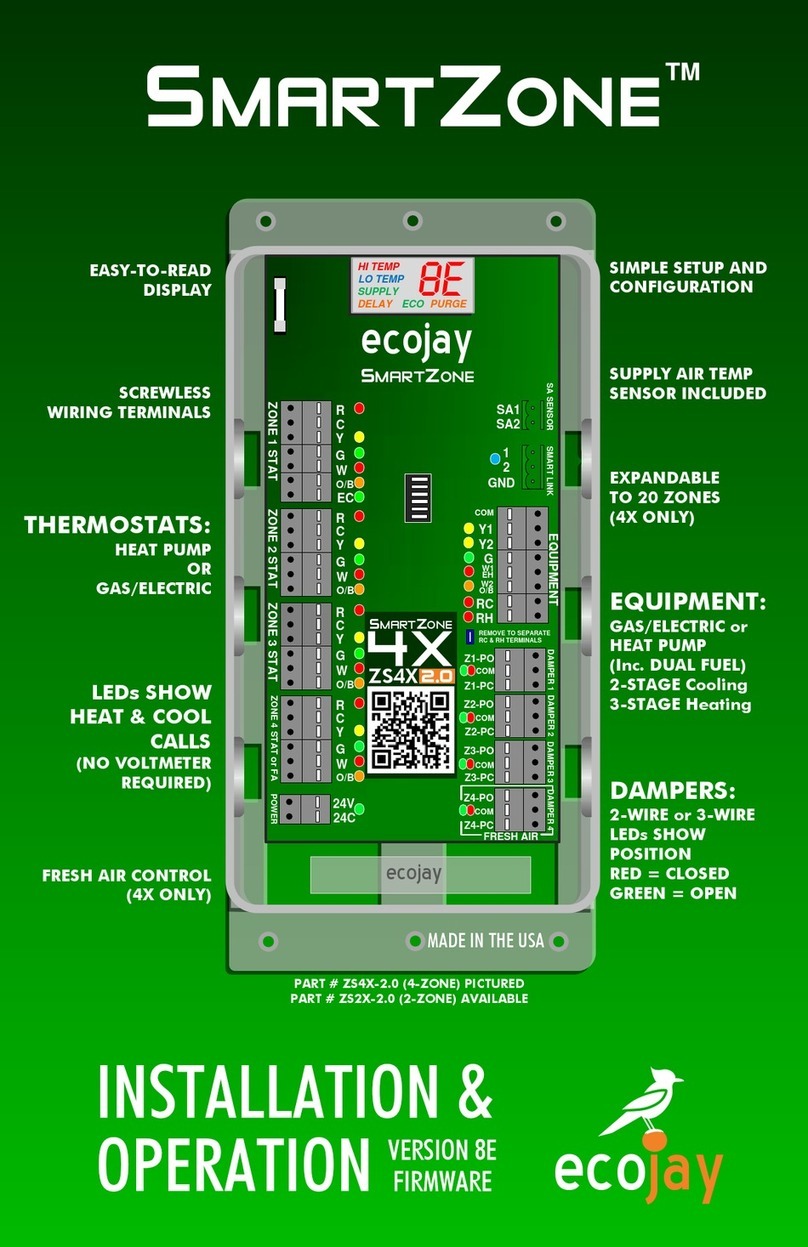
Ecojay
Ecojay SmartZone ZS4X-2.0 Installation & operation
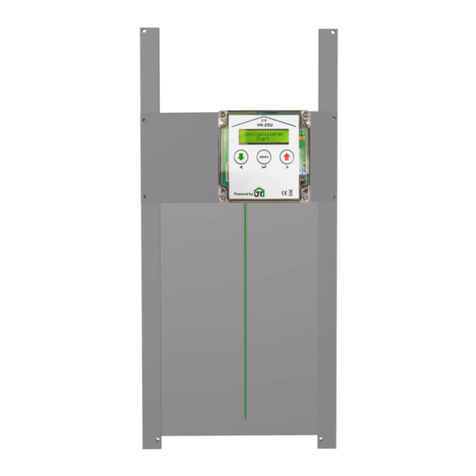
JOSTechnik
JOSTechnik HK2.0-R Series Original operating instructions
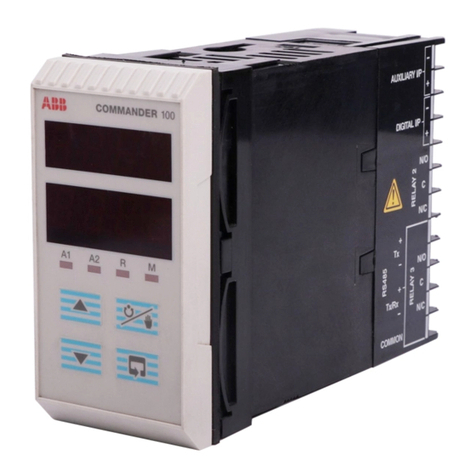
ABB
ABB COMMANDER 100 operating guide
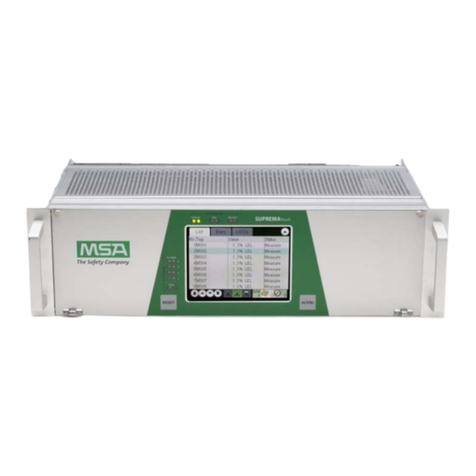
MSA
MSA SUPREMA Touch Installation & maintenance instructions
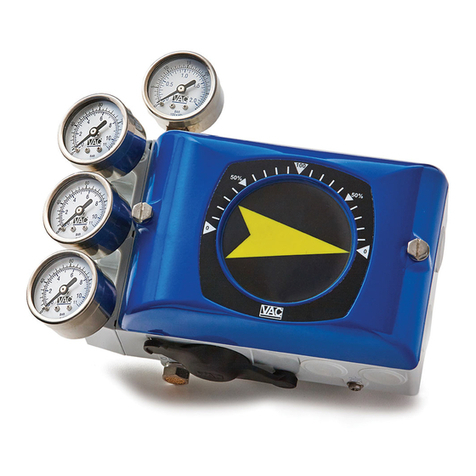
VAC
VAC V200P Installation, operation and maintenance instructions
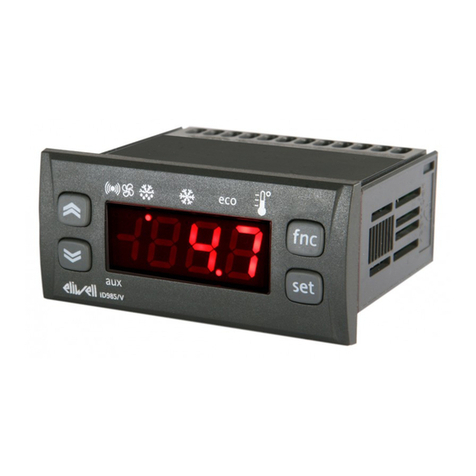
Eliwell
Eliwell ID 985 manual
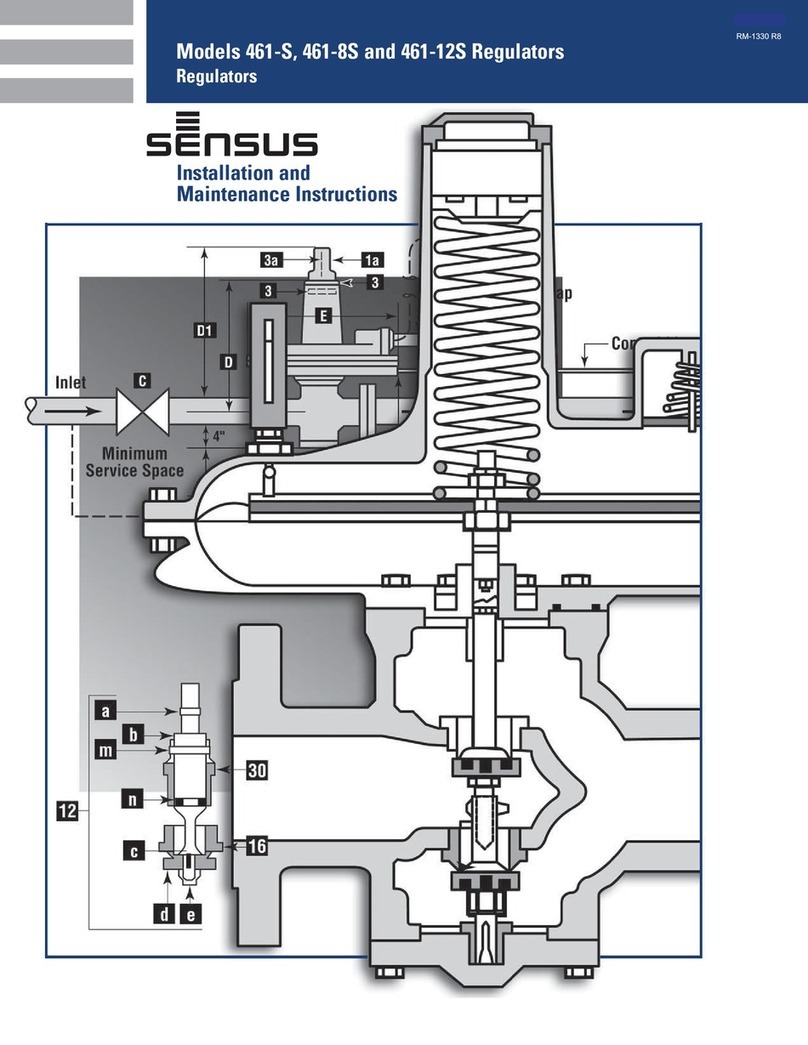
Sensus
Sensus 461-S Installation and maintenance instructions
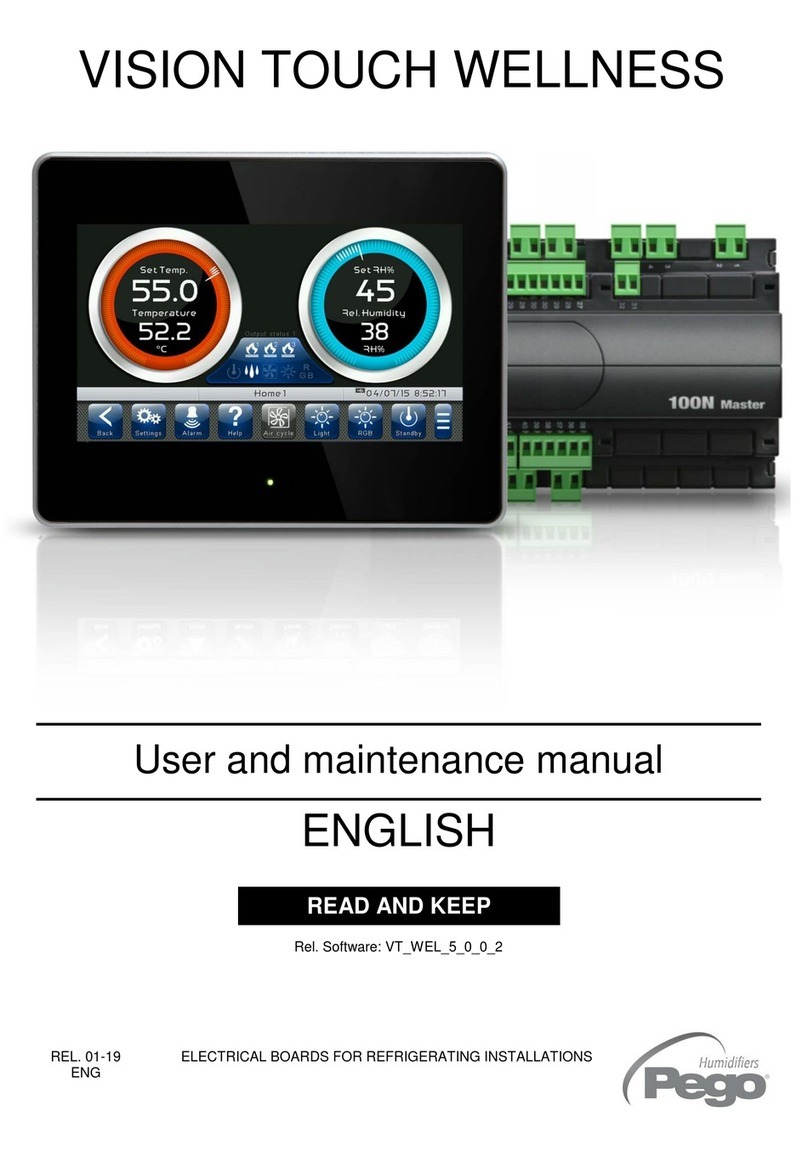
Pego
Pego Vision Touch Wellness User and maintenance manual

Mitsubishi Electric
Mitsubishi Electric MELSEC FX3U-485ADP-MB installation manual
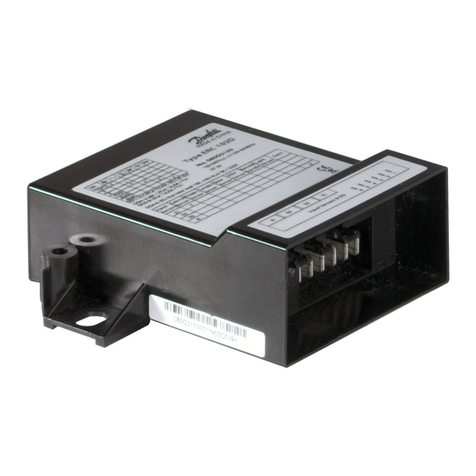
Danfoss
Danfoss ERC 113 Reference manual

BERMAD
BERMAD BIC 2 user manual

Mitsubishi Electric
Mitsubishi Electric MELSEC iQ-R Series Introduction Guide
